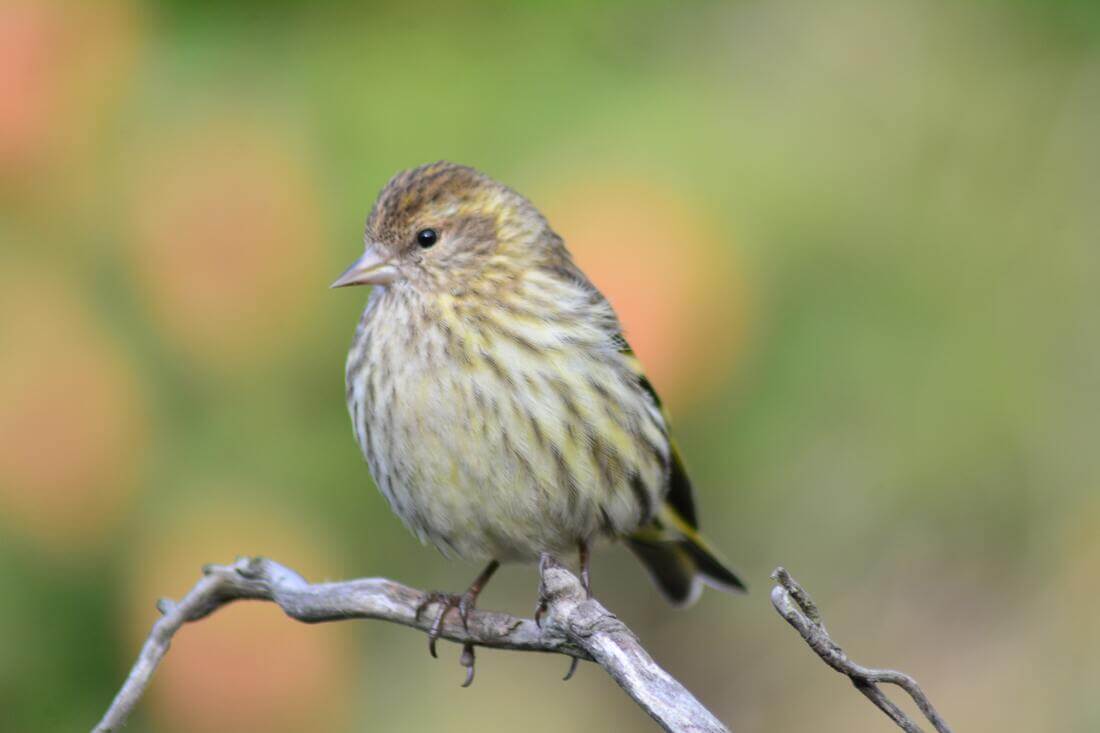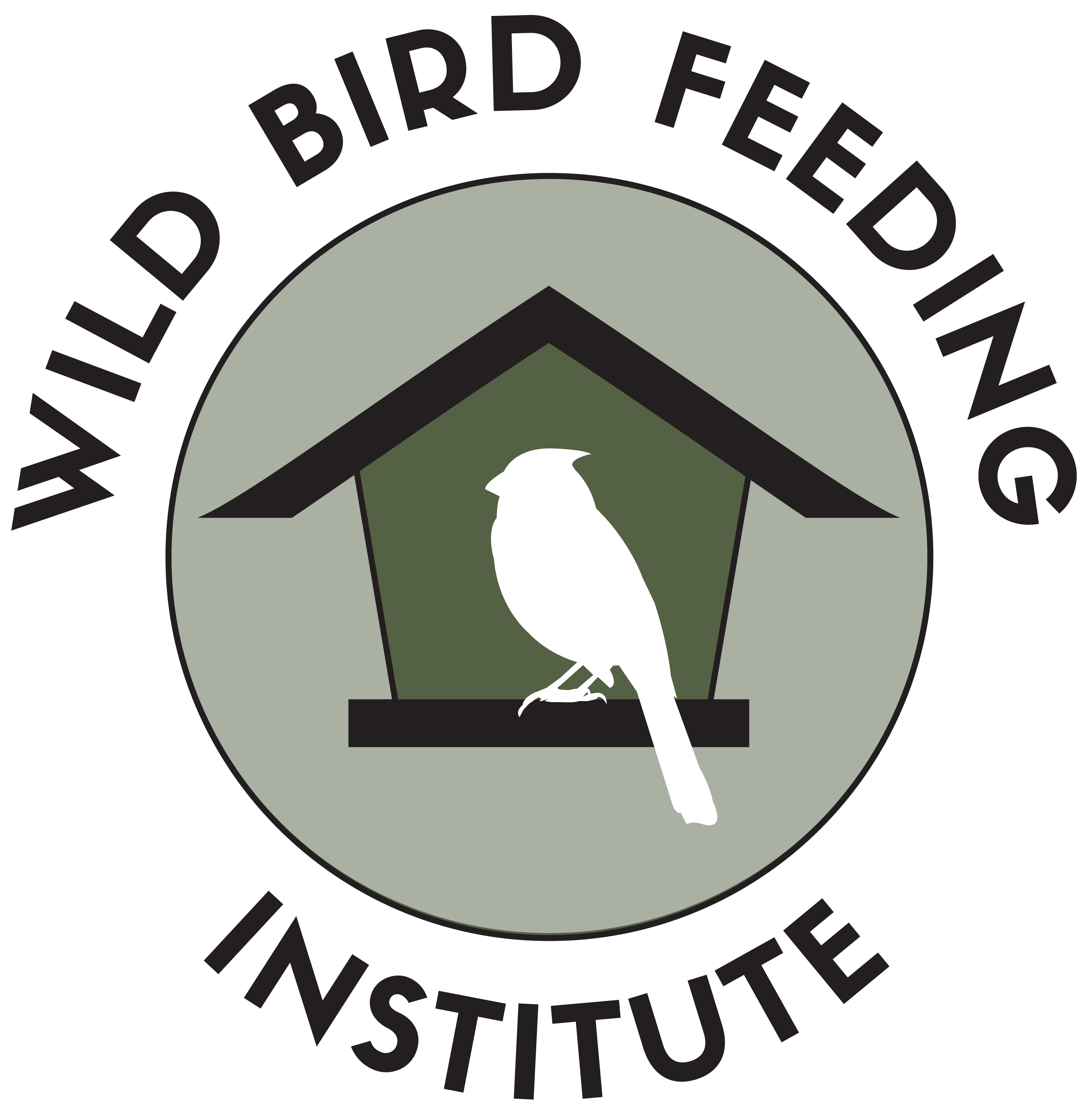Preventing Salmonella at Bird Feeders

By: Jenna McCullough, WBFI Research Consultant
California (1), Oregon (2), Washington (3), and British Columbia (4), Canada are reporting cases of a zoonotic disease, salmonellosis, impacting common feeder birds. These cases are mostly concentrated in Pine Siskins (Spinus pinus) and other finches.
Salmonellosis is a disease caused by the bacterium Salmonella enterica, which naturally occurs in the digestive tracts of a broad range of animals, including cattle, pigs, poultry, and wild birds5. Typically, human infections are linked to contaminated produce and meat products, with symptoms that include diarrhea, fever, and stomach cramps. The bacteria can be transmitted to humans through wild animals, such as birds, but it is rare (6). It’s more likely that contact with a pet turtle is the root of a non-foodborne Salmonella infection than one linked to exposure of wild bird feces at a feeder.
However, naturally occurring Salmonella outbreaks are more common within bird populations themselves. Salmonella is spread by contact with feces of an infected individual. These outbreaks typically occur during the cold winter months within gregarious, flocking songbird species (7) like Pine Siskins and House finches in North America (8). In Europe, a similar assemblage of birds, such as Eurasian Siskins (Carduelis spinus), Common Redpolls (Carduelis flammea), or Greenfinches (Carduelis chloris), are also reported to have similar outbreaks (9),(10). This is due, in part, to bird behavior as well as disease dynamics.
During the winter, birds in colder climates have a poorer body condition than they would in the spring due to harsh weather and limited food resources. Poor body condition causes individuals to be more susceptible to serious infections. Gregarious species, like finches, also gather in larger flocks during the winter (11). This behavior increases their population density and allows for a higher rate of disease transmission within the flock. These dynamics are exaggerated during an irruption year (12), in which larger than normal flocks of montante/boreal bird species travel outside their typical winter range in search of more food. Indeed, the fall of 2020 was a phenomenal irruption year across North America (13), particularly for Pine Siskins, the species for which the most Salmonella infections have been reported during winter 2020-2021.
You can recognize a bird with Salmonellosis by observing its behavior. Look for signs such as fluffed up feathers, sunken or closed eyes, and unexpectedly lethargic behavior compared to other birds. An infected bird will be less likely to fly away if you approach it, but that doesn’t mean you should. Since avian Salmonellosis is incurable, a bird exhibiting these symptoms will likely die and you should therefore leave it be. Dispose of the bird in a sealable plastic bag while wearing plastic gloves and wash your hands afterwards. Dead individuals will show signs of a pasted cloaca or white substances around the mouth.
Just like with the COVID-19 pandemic, our own actions can help curb the spread of this disease. If you think a dead bird near your feeder succumbed to Salmonellosis, as opposed to striking a window or being killed by a free-ranging cat, immediately clean your feeders after disposing of the affected individual. If you live in an area with a reported outbreak, be sure to:
- Clean your feeders several times a week. A recent study (14) found that the most effective way to clean birdfeeders was a combination of soaking them in a 9:1 bleach solution (i.e., 9 quarts of water to 1 quart of bleach) for at least fifteen minutes paired with washing them with general dish soap and water. Be sure to clean feeders away from where you prepare food and thoroughly wash your hands afterwards. You can also opt to spray empty feeders with the same 9:1 bleach solution. Allow the feeders to completely dry before re-filling, as damp bird seed promotes mold growth
- PRO TIP: To make this process easier, switch out feeders as you clean them so there is always a backup feeder(s) while the others are being cleaned.
- Clean your bird baths with the same solution as noted above—feces congregate in these areas too! Water in bird baths should be replaced daily, year round, to prohibit algal and bacterial growth in standing water.
- Temporarily remove feeders that allow contact with bird feces and food. For example, tube feeders collect less feces than a platform feeder.
- Always keep your cat indoors. Cats, just like humans, can be infected by Samonella and can bring its infection into your home (10). During a salmonellosis outbreak, a lethargic, infected bird that is an easy target for a cat to kill. This, in turn, exposes the cat to Salmonella and potentially its owner. Regardless of disease outbreaks, cats always should be kept indoors; there are many studies that have documented the negative impact of free-ranging domestic cats on wild bird populations (15),(16). It is safer for the cat, for you, and for the birds to keep cats inside. Last, but not least, take steps to make your backyard a paradise for birds by following our six-step guide.
Article References
1. Bird Rescue Center of Sonoma County, California. 2021. Pine Siskin Salmonellosis Outbreak, Winter 2020-2021. Link: https://tinyurl.com/y5yhufxw
2. KGW8 News, Portland, Oregon. ‘Help the birds social distance’: Preventing a bird salmonella outbreak. (2020). Link: https://tinyurl.com/y5qzy5b2
3. Washington Department of Fish and Wildlife. (2021) Help protect wild birds from deadly salmonellosis. Link: https://tinyurl.com/y5ul4vct
4. Adams, J. J. (2021) Remove your bird feeders: SPCA warns of salmonella transmission. Vancouver Sun. Link: https://tinyurl.com/y6knebqw
5. Hilbert, F. et al. (2012) P. Salmonella in the wildlife-human interface. Food Res. Int. 45, 603–608.
6. Tsiodras, S. et al. (2008) Human infections associated with wild birds. J. Infect. 56, 83–98.
7. Lawson, B. et al. (2018) Health hazards to wild birds and risk factors associated with anthropogenic food provisioning. Philos. Trans. R. Soc. Lond. B Biol. Sci. 373.
8. Locke, L. N. et al. (1973) Salmonellosis in passerine birds in Maryland and West Virginia. J. Wildl. Dis. 9, 144–145.
9. Hurvell, B. et al. (1974). Studies on Salmonella typhimurium infections in passerine birds in Sweden. Int. Congr. Game Biol 11 493–497.
10. Söderlund, R. et al (2019). Linked seasonal outbreaks of Salmonella Typhimurium among passerine birds, domestic cats and humans, Sweden, 2009 to 2016. Euro Surveill. 24.
11. Emlen, J. T. (1952). Flocking Behavior in Birds. Auk 69, 160–170
12. American Birding Association. (2020) A Superflight of Finches in the East. Field Ornithology. Link: https://tinyurl.com/y3s3426m
13. The Audubon Society. (2020) Pine siskins have taken over the country. Link: https://tinyurl.com/y6yxv5g9
14. Feliciano, L. M. et al. (2018). The effectiveness of bird feeder cleaning methods with and without debris. Wilson J. Ornithol. 130, 313–320.
15. Loss, S. R. et al. (2018). Responding to misinformation and criticisms regarding United States cat predation estimates. Biol. Invasions 20, 3385–3396.
16. Woinarski, J. C. Z. et al. (2017) How many birds are killed by cats in Australia? Biol. Conserv. 214, 76–87.
